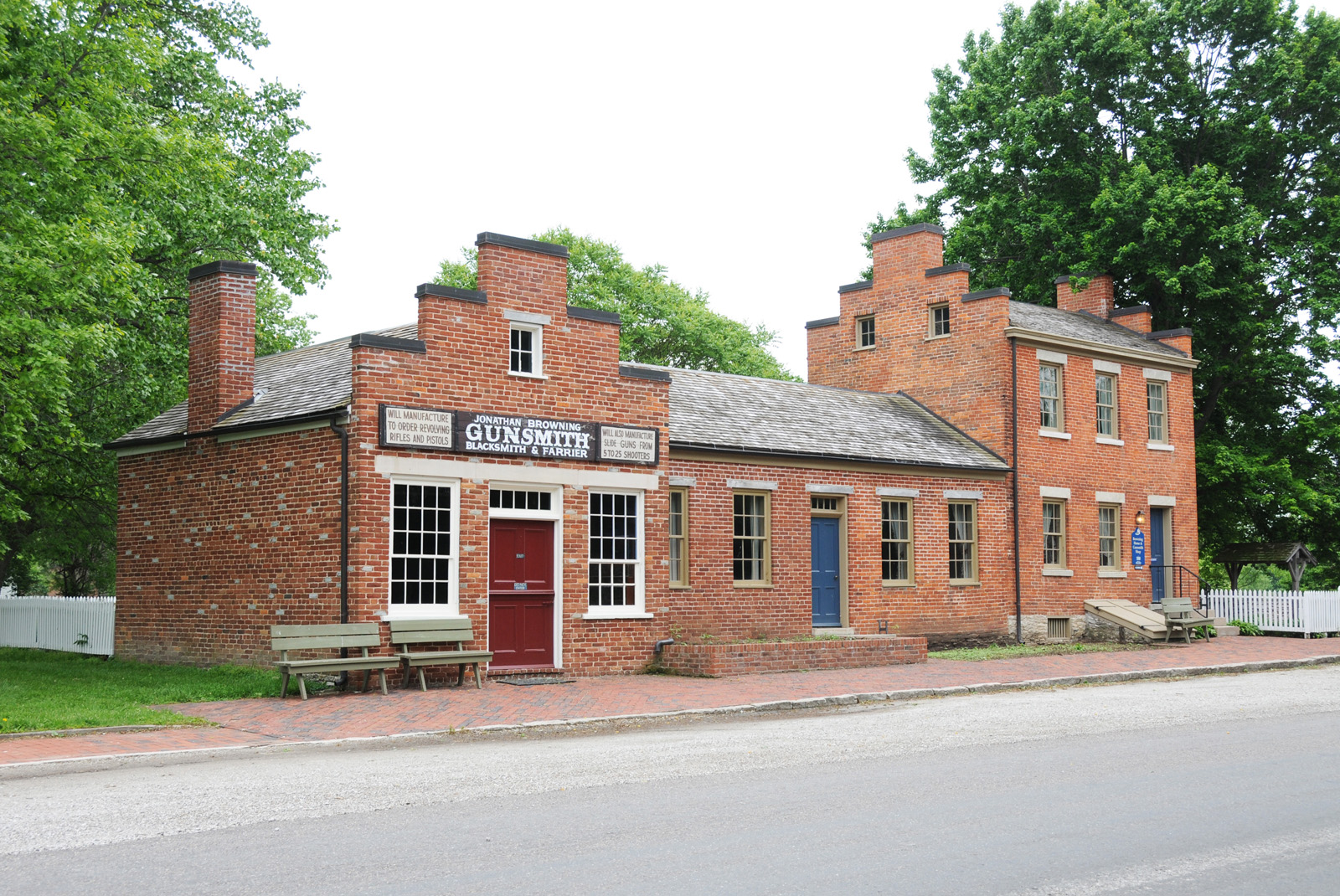|
Jonathan Browning (inventor)
Jonathan Browning (October 22, 1805 – June 21, 1879) was an American inventor and gunsmith. Early life Jonathan Browning was born October 22, 1805, in Sumner County, Tennessee. He began his career as a blacksmith, but by 1824 switched to become a gunsmith after an apprenticeship with Samuel Porter in Nashville. He began producing firearms independently by 1831 and shortly thereafter invented a "sliding breech" repeating rifle also called a Harmonica gun between 1834 and 1842 while living in Quincy, Illinois. Each Harmonica gun took two weeks to manufacture by hand and were available to purchase for $24.00. Browning moved his family to White's Creek, near Nashville, about 1827 and resided there until the spring of 1833. Jonathan, moved with his extended family and spent a season in Fairfield, Illinois, visiting with his sister Clarissa Neel. About 1834, Jonathan and his brother James Green Browning bought farms thirty miles northeast of Quincy in La Prairie, Illinois. ... [...More Info...] [...Related Items...] OR: [Wikipedia] [Google] [Baidu] |
Sumner County, Tennessee
Sumner County is a county located on the central northern border of the U.S. state of Tennessee, in what is called Middle Tennessee. As of the 2020 census, the population was 196,281. Its county seat is Gallatin, and its largest city is Hendersonville. The county is named for American Revolutionary War hero General Jethro Sumner. Sumner County is part of the Nashville-Davidson–Murfreesboro–Franklin, TN Metropolitan Statistical Area. The county is made up of eight cities, including Gallatin, Goodlettsville, Hendersonville, Millersville, Mitchellville, Portland, Westmoreland, and White House. Sumner County is northeast of Nashville, Tennessee. History Prior to the European colonization of North America, the county had been inhabited by various cultures of Native Americans for several thousand years. Nomadic Paleo and Archaic hunter-gatherer campsites, as well as substantial Woodland and Mississippian-period occupation sites and burial grounds, can be found scattered thro ... [...More Info...] [...Related Items...] OR: [Wikipedia] [Google] [Baidu] |
Church Of Christ (Latter Day Saints)
The Church of Christ was the original name of the Latter Day Saint church founded by Joseph Smith. Organized informally in 1829 in New York and then formally on April 6, 1830, it was the first organization to implement the principles found in Smith's newly published Book of Mormon, and thus its establishment represents the formal beginning of the Latter Day Saint movement. Later names for this organization included the Church of the Latter Day Saints (by 1834 resolution),"Minutes of a Conference" '''', vol. 2, no. 20, p. 160 (May 1832). the Church of Jesus Christ, |
19th-century American Inventors
The 19th (nineteenth) century began on 1 January 1801 ( MDCCCI), and ended on 31 December 1900 ( MCM). The 19th century was the ninth century of the 2nd millennium. The 19th century was characterized by vast social upheaval. Slavery was abolished in much of Europe and the Americas. The First Industrial Revolution, though it began in the late 18th century, expanding beyond its British homeland for the first time during this century, particularly remaking the economies and societies of the Low Countries, the Rhineland, Northern Italy, and the Northeastern United States. A few decades later, the Second Industrial Revolution led to ever more massive urbanization and much higher levels of productivity, profit, and prosperity, a pattern that continued into the 20th century. The Islamic gunpowder empires fell into decline and European imperialism brought much of South Asia, Southeast Asia, and almost all of Africa under colonial rule. It was also marked by the collapse of the large S ... [...More Info...] [...Related Items...] OR: [Wikipedia] [Google] [Baidu] |

